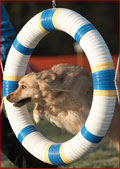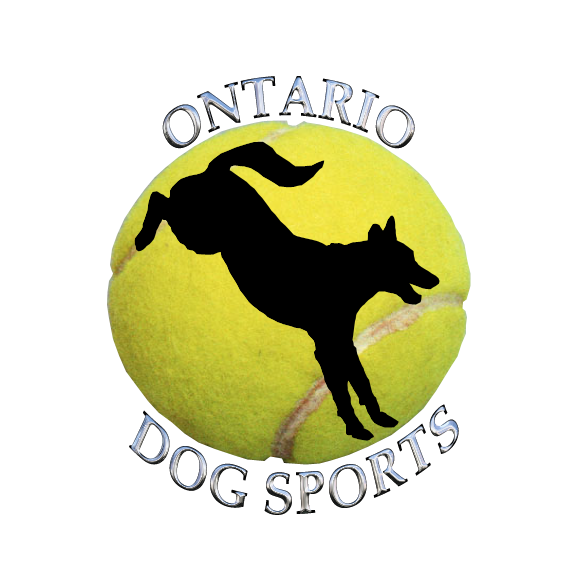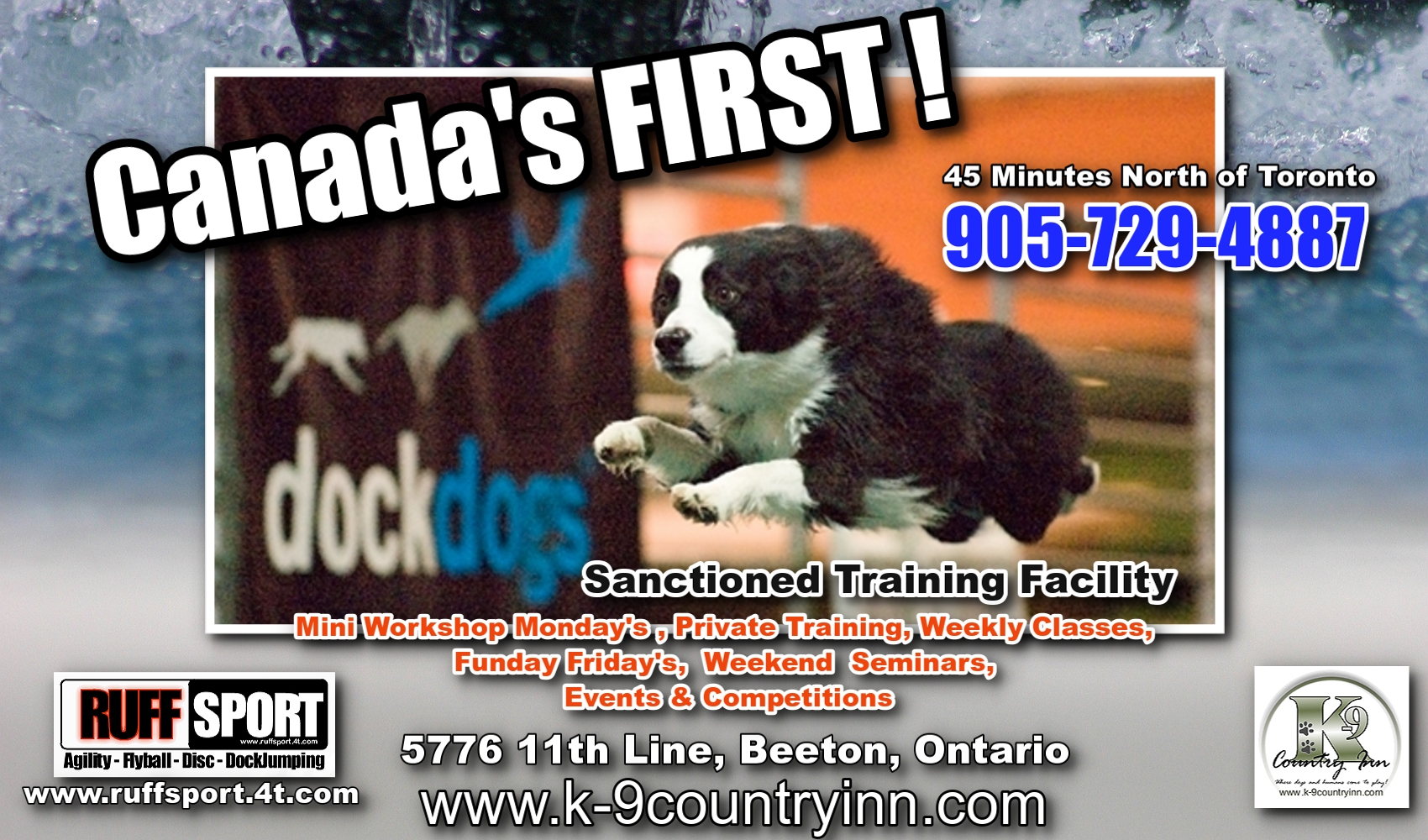REQUIREMENTS FOR A GOOD HERDING DOG
By: Dorothy DeLisle (GSD VOM INSEL)
Herding Instinct – actually this is composed of many genes, so it’s not all or none. And different traits are more useful under certain herding situations than others. Instinct may not be expressed in young dogs. The age at which it comes out varies greatly. Some puppies will herd their littermates; others will be a year old before they show instinct. If you want to get a young dog, look for a good herding background and then choose based on the following traits and hope for the best. Dogs that are under socialized, or of very poor temperament or have been reprimanded for chasing their animals, may actually have hidden instinct but won’t show any when tested for it. Also try testing a young dog on ducks; they are less intimating to a puppy than hoof stock.
Dogs without instinct can be obedience trained to herd. However, they will always be totally reliant on the handler for every move they must make and as such are of limited usefulness. They also won’t have the Presence that only a dog with true instinct can convey to the livestock.
Biddable/tractable/team player – dog must have high degree of trainability and willingness to please his handler. Non-biddable dogs are a battle to train. People-oriented dogs make much better team mates than independent spirits.
Forgiveness – dog does not hold grudge against handler after corrections or administration of pain (ex. pulling burs out of coat).
In a similar vein, a herding dog must be willing to keep working after attack by livestock (kicked by cow, butted by goat, bit by gander, etc.). It’s not forgiveness we want here, just the hardness to brush off the incident.
High Confidence – while a lower confidence dog will be able to work light/flighty stock, only a high confidence dog will be able to control heavy, resistant/stubborn or combative livestock. Lower confidence dogs also stress out more easily; stress produces stress releasers such as inappropriate grips and diving into the stock. Clearly, shy dogs won’t cut it.
Good Movement – smooth movement is less disturbing to livestock than choppy movement
– smooth movement results in more endurance for the dog
– speed is need to be able to head off fleeing livestock
– agility is needed for the sharp turns the dog must make to head off fleeing livestock.
{Extreme Am specialty type GSDs, with their long backs and long lower leg bones, lack good turning ability. Wobbly reared dogs and dogs that walk on their pasterns and/or hocks won't cut it in herding either.}
High Prey Drive – herding instinct is derived from prey drive. Two to three month old puppies should be pulling on your pant legs and shaking their heads when they do so. [Note1: if a puppy only bites at the ankles, this dog will be a heeler, biting low on the heels of livestock. GSD’s being truly upright in their herding style are usually not heelers in this restricted sense; they will bite all along your lower pant leg, wherever they can easily reach.] [Note2: Don’t correct a puppy for biting on you. This can train out the drives you need for a good working dog. Learn to live with it or to prevent it with out discouraging it. A ripped pair of pants is worth the price of a good working dog. This behavior will go away on its own, generally at 16-18 weeks.]
Keenness – the degree of interest a dog has in the livestock. Dogs with low keenness are easily distracted. Dogs must have a certain level of keenness for them to want to continue working after a correction. Dogs that are to be used primarily as tending dogs should have exceptionally high keenness as we want them to keep their attention on essentially non-moving sheep. However, this can be too much keenness for working small groups of flighty stock as the dogs over stimulate too easily. Match the level of keenness with the type of herding to be done. Bear in mind that keenness often starts off low and increases with exposure to herding.
Good coat– Coat should be appropriate for the terrain and climate a herding dog will work in. Too many breeds have excessive coat put on them by show ring selection. A lot of undercoat holds a lot of burs, foxtails, and other nasty plant seeds and is hard to groom them out of. Certain textures of coat pick up seeds more so than others.
Not white- While white dogs (or otherwise very light-colored) can herd, they usually have to work harder to impress their power upon the stock. This is especially a problem if the stock are used to a stock guardian dog, which are almost always white or light-colored. A mostly white dog should have at least a colored head if it is to have full effectiveness. (Hence, the collie standard.) Also, it is more difficult for a shepherd to distinguish a white dog from a group of white sheep; a shepherd can’t give the dog proper directions if he cannot determine where the dog is. While a white dog is easier to see under moonlight, under total darkness with no light source to reflect off the light color, a dark dog is actually easier to see.
Even among colored dogs, darker dogs impress live stock more than lighter dogs do. Hence, the GSD standard calls for rich pigmentation. A solid black dog has extra presence.
Good pads - An often neglected trait, but very important. Too many dogs have footpads that rip too easily. Sharp turns are hard on pads, as is the many miles a real ranch dog has to travel. Some dogs have genetically soft pads. This is something you want to breed against. Others have soft pads because the dogs are only exposed to fairly smooth or soft surfaces. The latter dogs can develop tougher pads with exposure to rougher or less soft surfaces. The dogs with genetically soft pads will never toughen up.
Stock Ethic – partially genetic, partially trained. All too often poor training destroys a stock ethic. This is a dog’s understanding that the stock are his charges and he is there to control and train them not to abuse them.
Work Ethic – mostly genetic. A dog with a work ethic stays with the job. He is not easily drawn away from his work. That is, he does not go off chasing squirrels when on the job. He does not quit his job to say hi to a passer by or to play with another dog. He does not quit at the smallest correction.
In Summary, a good herding dog must have solid temperament and sound structure combined with the drives and instincts necessary for stock work.
ADDENDUM
The following are some traits that German Shepherds specifically desire in their herding dogs. Keep in mind that they need a dog that can patrol boundaries all day.
Endurance – The trot is an endurance pace. It is also a pace that does not disturb livestock. They say they compromised on speed to get endurance in the GSD. Despite this, most of the well-build GSDs I know are very fast when they run.
Chest not too narrow - poor lung capacity
Not too much weight either as fat or substance - more weight means more work for the dog to carry it around-puppies should be kept ultra slim to reduce the chances of hip dysplasia as puppy hood is a very formative time for the hip joint. A lame HD dog isn’t a useful herding dog.
Solid temperament - those with less than stellar confidence will be apprehensive with strange situations, with sheep too close on the border, with people too near the working area, and with cars during roadwork among other things. It may avoid its job during such situations. It won't bite when necessary to control the flock. It will allow the sheep to walk over it.
Aloofness with strangers - don't want dog leaving its work to run up to and greet passers-by. (This is in the breed santdards of several herding breed.)
(Note1: A two or three month old puppy should NOT be aloof with strangers. The desired trait develops a bit later than this.)
(Note 2: Many people mistakenly call GSD’s unfriendly when they are actually being neutral. This by the way makes a great therapy dog. Much better than a friendly dog that wants to jump up on people. Many people also think GSDs shy when they turn away when what they are actually seeing is the ending of a very brief interest in the stranger. The interest lasts just long enough to determine that the stranger is not a threat. The dog turns away because the stranger no longer holds any interest in them, and they return to scanning the environment.)
Bidability - want a dog that's easy to train and control
Handler orientated - want dog that regularly looks to the shepherd for instruction (Germans give a lot of crook signals)
Alertness – tending dogs should be scanning their surroundings
On/Off switch – When told the German equivalent of “That Will Do” the dog should turn off its work drives and relax. Dog should be calmly waiting to be sent to work. When given permission to work, the dog should kick into drive and go to work. Aside from these dogs being easier to live with, it’s a necessary trait if one is to walk with a dog on leash while leading the flock. (This is a common practice in Germany. It is the means to bring novice dogs out to the grazes for training. It also helps prevent the flock from running past the shepherd.)
Ability to remove pressure from the livestock – because Germany is not wide open spaces, dogs must work very close to their livestock. They must be able to communicate to the sheep that it is ok to be near the dog. It is very common to see a dog placed at a pivot point or “pick” (beside a gate or bridge, on the sharp corner, etc. ) to have its graze averted so the sheep won’t be afraid to go past it (through the gate, onto the bridge, or around the corner, etc).

 Herding
Herding 





Reader Comments